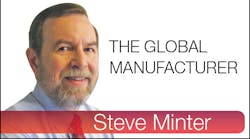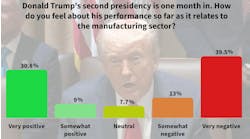Human capital and operational excellence are squarely in the sights of corporate leaders looking to bolster their businesses in a sluggish global economy. That’s the main takeaway from the Conference Board’s CEO Challenge 2013, a survey of more than 700 senior executives in the U.S., Europe and Asia.
Asked to identify and rank the most pressing challenges they face, business leaders picked human capital — how best to develop, engage, manage, and retain talent — as the leading challenge (out of 10 choices). Operational excellence came in second, followed by innovation and customer relationships. Interestingly, there was no difference between the regions in terms of these top choices leaders in Asia, Europe, and the U.S. all included the same four among their top five challenges.
“Since 2008, we had seen CEOs express extreme concern about external pressures on the business environment, especially in those regions hardest hit by the economic crisis. Last year, we saw ‘global political/economic risk’ and ‘government regulation’ both ranked as top-four challenges worldwide,” said Bart van Ark, the Conference Board’s executive vice president and chief economist, and a co-author of the report. “In CEO Challenge 2013, leaders seem to be turning away from macro factors outside their control to look hard at their own organizations, employees, customers, level of efficiency, and capacity for innovation.”
What are companies doing to meet these challenges? CEOs said they were addressing human capital first and foremost by growing talent internally. They also said they were providing employee training and raising employee engagement.
In pursuit of operational excellence, CEOs are focused on raising employee engagement and productivity. Leaders in Asia also gave a strong nod to investing in key technologies. U.S. and European leaders are working to reduce baseline costs.
Innovation fell from its ranking last year as the top global challenge. The board pointed out that six of the top 10 global strategies for innovation “draw on human capital, including creating a culture of innovation, develop innovation skills for all employees, and find, engage and incentivize innovative staff.” In the U.S. and Asia, the high rank given to “engage in strategic alliances with customers, suppliers, and/or business partners,” the board noted, reflects a longer-term strategy for growth.
To strengthen customer relationships, CEOs said they were focused on enhancing the quality of products/services and sharpening their understanding of customer/client needs.
The Conference Board pointed out the focus on people has broadened beyond simply developing a business’ leaders.
“On a global basis as well as across regions, this year also saw a shift toward internal talent development as opposed to strategies focused on management or the senior team,” said Rebecca Ray, senior vice president, Human Capital at the Conference Board, and a co-author of the report. “In a time of uncertainty, this appears to be a long-term approach that will assure the right talent is in place to take advantage of the next boom, whenever it comes.”
For manufacturing leaders in particular, the Conference Board survey offers a reminder that the hunt for talent is critical as a generation raised to pursue service jobs must be wooed back and convinced that manufacturing offers an interesting, profitable and secure future. Moreover, it should provide an incentive for the large number of companies that have ignored, or dabbled in, lean manufacturing and other continuous improvement methodologies to take them much more seriously.




